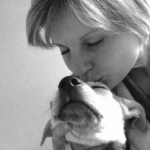I have watched, over the 32 years of my career as a veterinarian, the attitudes of pet owners change regarding their pets. Once, more of an agricultural companion, dogs, and cats to a lesser extent, have become our four-legged family members. No longer do we euthanize our animals because they have a bad diagnosis. These days we provide them with medical care and pain medication that supports their quality of life far longer than they ever enjoyed in the past.
A reflection of this change in attitude on the part of people with pets, is the change in the terminology we use to refer to pets and their people. Technically, and legally, pets are “owned” by their people. For this reason we call their people: “Pet Owners”. But, due to changing attitudes about pets in our lives, people who have pets are now termed: “Pet Guardians”, or “Pet Parents” . And with this change in terminology comes changes in pet parent’s attitudes regarding putting their pets to sleep when they are suffering from bad diseases. It is from this change in point of view that has fuelled the recent interest in providing pets with terminal disease in-home hospice care until their quality of life is no more.
Studies have shown that the animals we have living with us in emotional relationships contribute to our good health and longevity. Its been found that when prisoners are allowed to keep pets, even a gold fish, that their violence rates reduce. People who have heart attacks have less chance of getting a second one if they pet their dog a lot. (Really!) Animals mean a lot to us, and its no wonder its hard to say goodbye when they’ve reached the end of their natural lives.
Pet hospice provides us with an opportunity to allow our pets to live in comfort and die in dignity, only when it is their time to go. At no time are pets allowed to suffer, and pet hospice needs to be managed by professionals: your veterinarian and your veterinary technician/pet hospice nurse.
In this thread of articles associated with this topic, you will learn more about what to expect, and many other details that can help your pet during its hospice care. For example: What are good techniques for feeding your pet with a reduced appetite? What are good bedding choices; and, if they are not getting up very well, and what to look for in a sling?
As always, your questions are welcome, to help guide us in our journey to educate you.
Hospice is a care-giving system that provides a nurturing environment to meet the physical and emotional needs for terminally ill patients, whether human or companion animal. Hospice care can manifest in a number of ways. It’s less a location than a state of mind.
Many of us have had experience with the kind of hospice care that people get. It’s different with animals. As pet guardians we are given the obligation to make the right choice regarding extending our pet’s life, or not. As compared to human hospice patients, there is no societal taboo on euthanasia for our pets, such as there is with people.
For most folks, keeping our beloved pets around for as long as we can is our natural inclination. Of course we don’t want them around just to satisfy our need to have them around, if they are suffering and their quality of life has declined sufficiently. When their quality of life declines past a certain point, then it is time to say goodbye.
It is of paramount importance to engage your veterinarian in helping you not just to provide as much palliative (pain-relieving) care as is available for starting down the home hospice road, but also with helpful guidance all along your home hospice journey.
Our intent on this website is to help support you in this process. Hopefully your local veterinary team is doing a good job for you and your little friend.
The sort of questions that we will be answering here on this website includes questions such as:
[/mk_fancy_title][mk_custom_list style=”e30b” icon_color=”#cb8a05″ margin_bottom=”30″ align=”none”]
- Is your pet eating?
- How interested are they in what’s going on around them?
- Do you think their pain is being adequately controlled?
- Are there other approaches you’d like to try?
- Do you feel you’re doing all you can?
- How’s YOUR (the caregiver) quality of life?
[/mk_custom_list]
True Quality of Life is hard to assess in our animals. We have to try to imagine what they think is quality. The basics, of course, include freedom from pain, appetite/eating/drinking, mobility, fecal and urinary continence, maintaining a healthy weight, curiosity, sleep, and companionability.
You can further define these qualities for your own pet since you know them the best. You know what makes them happy: From chasing a ball, to going on a walk, or taking a car ride; even the basics such as grooming themselves and maintaining their cleanliness.
In articles that follow this thread we will present the quality of life scales that are being used in dogs and cats that can help you to objectify this difficult process of trying to figure out when is the right time to say goodbye. Something that in itself is not easy…
Your questions are welcome.
VIEW ALL HOSPICE CARE POSTS
[/mk_button]




